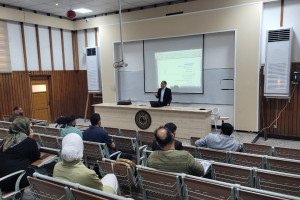
The doctoral thesis of the student Ahmed Sakban Khudair Abbas from the University of Basra, College of Engineering, Department of Civil Engineering was discussed in the field of hydrological modeling and suspended sediment load in the Diyala River watershed using the SWAT model. It includes building a hydrological model to simulate surface runoff and suspended sediment load in the Diyala River watershed. To achieve this motivation, the SWAT model was used, which is an easy-to-implement, semi-distributed physical model whose time step is continuous and can be applied to all arid or semi-arid watershed areas. Due to the lack of historical data for suspended sediment load values for the study area, Suspended sediment measurements were carried out in the field from November 2022 to April 2023.
A SWAT model was built and fed with input data such as a digital elevation model (DEM) with a 30 m resolution, soil map data provided by the Food and Agriculture Organization (FAO), and a land use and land cover (LULC) map from the Landsat satellite with a spatial resolution of 30 m. Weather data from global weather data derived from the Climate Prediction System Reanalysis (CFSR), and daily flow data in the Hamrin and Darbandikhan dams from January 1996 to April 2023.
The results showed that the average annual values of suspended sediments from January 2000 to April 2023 equal 115.24 tons/ha/year. The annual evaporation rate constitutes 65% of the rainfall in the Diyala River watershed, while the annual flow rate constitutes 37% of the rainfall.





